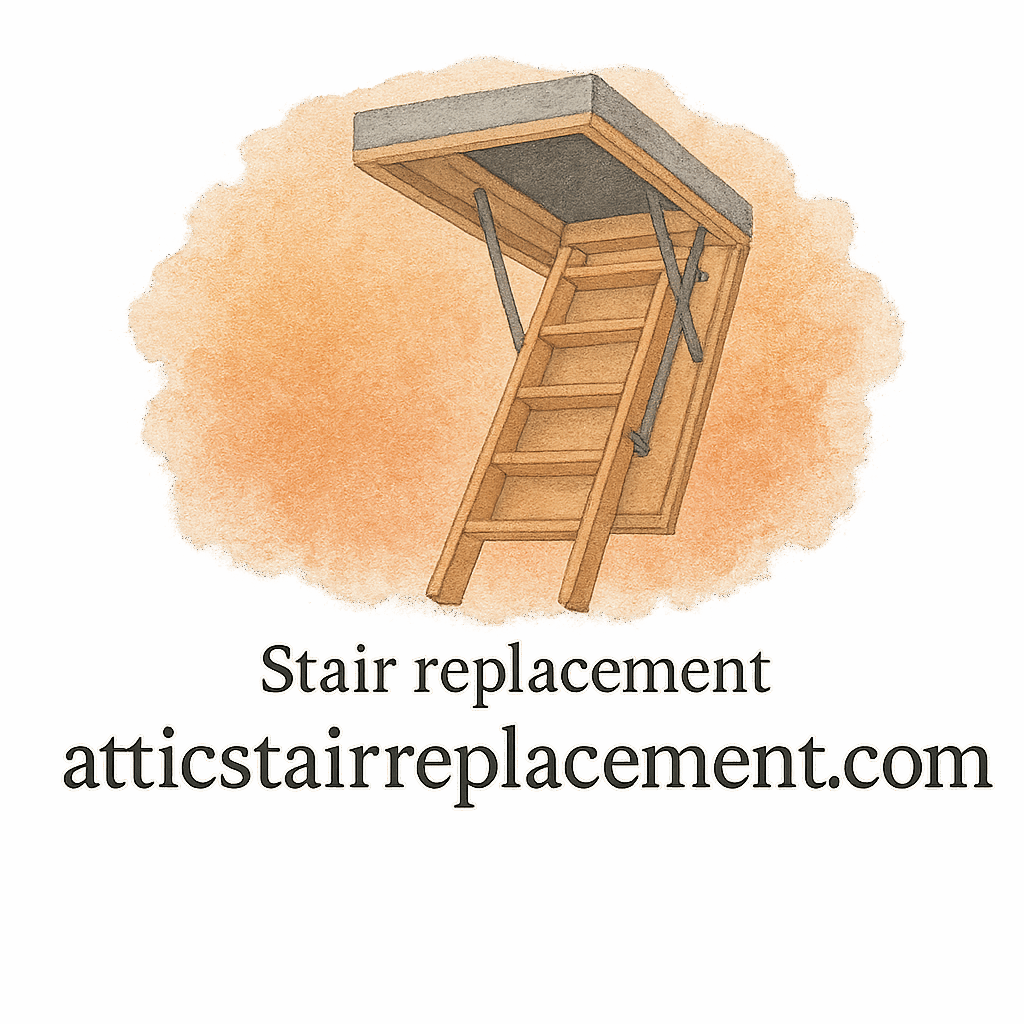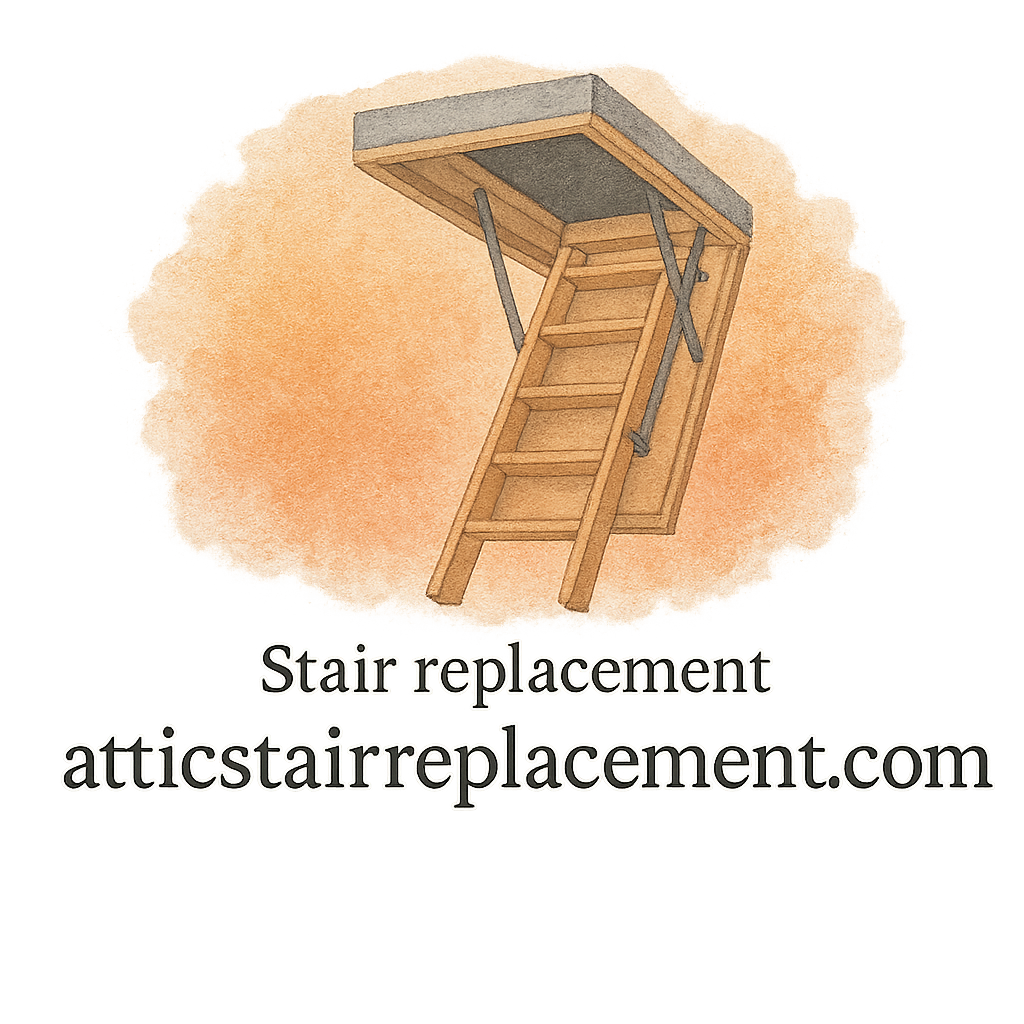Introduction: Why DIY Attic Stair Fixes Matter
Attic stairs are one of those home features you don’t think about until they stop working properly. Whether it’s a wobbly step, a noisy hinge, or a folding mechanism that feels like it’s fighting you, small issues can quickly become big frustrations. The good news? You don’t always need a contractor to handle these problems. With a little know-how, the right tools, and some patience, you can tackle the most common attic stair replacement problems yourself.
In this guide, we’ll walk through five practical DIY fixes that homeowners can apply to keep their attic stairs safe, durable, and easy to use.
Understanding Common Attic Stair Problems
Before we jump into the fixes, it helps to know the common issues that pop up with attic stairs.
Loose or Wobbly Steps
Over time, screws loosen or wood weakens, causing steps to feel shaky underfoot.
Stuck or Hard-to-Open Folding Mechanism
Dust, misalignment, or lack of lubrication can make the folding system stiff.
Broken or Weak Springs
Springs take the brunt of the tension. If they wear out, your stairs may slam shut or refuse to stay open.
Misaligned Frame or Gaps
A frame that doesn’t sit flush can leave gaps, reducing energy efficiency and making the stairs harder to operate.
Creaking or Noisy Hinges
Old hinges often groan with every use, especially when lubrication is overdue.
Essential Tools and Materials for DIY Attic Stair Fixes
Basic Hand Tools
Keep a screwdriver set, adjustable wrench, pliers, and a drill handy.
Safety Gear
Don’t skip gloves, goggles, and a sturdy ladder.
Replacement Parts
Springs, hinges, and reinforcement brackets can be ordered online or found at home improvement stores.
DIY Fix #1: Repairing Loose or Wobbly Steps
Identifying the Problem
Press on each step. If it wiggles, the screws or nails may be loose.
Step-by-Step Fix
- Remove the old screws or nails.
- Replace them with longer, stronger screws.
- For weak wood, add a metal bracket for reinforcement.
Preventive Measures
Inspect your steps every six months to catch looseness before it becomes dangerous.
DIY Fix #2: Adjusting a Stuck Folding Mechanism
Why It Happens
Misalignment or rust buildup is usually the culprit.
Step-by-Step Adjustment
- Check alignment of the arms and hinges.
- Tighten or loosen bolts where needed.
- Apply a silicone-based spray to reduce friction.
Long-Term Care Tips
Avoid slamming the stairs shut. Smooth, steady movements extend the life of the mechanism.
DIY Fix #3: Replacing Weak or Broken Springs
Safety First
Springs are under tension. Always wear gloves and goggles, and keep kids and pets away during the repair.
Installing New Springs
- Remove old springs carefully with pliers.
- Attach new springs following manufacturer guidelines.
- Test the door’s tension by opening and closing it slowly.
Testing for Stability
If the stairs stay firmly in place, your job is done.
DIY Fix #4: Realigning the Frame and Sealing Gaps
Common Signs of Misalignment
Uneven edges, visible daylight around the hatch, or difficulty latching.
Step-by-Step Realignment
- Loosen the mounting screws slightly.
- Reposition the frame until it sits flush.
- Tighten screws securely.
Improving Energy Efficiency
Seal gaps with weatherstripping to keep your attic from leaking air, saving on energy bills.

DIY Fix #5: Lubricating and Silencing Noisy Hinges
Why Hinges Get Noisy
Friction, rust, and dust buildup cause the squeaks.
The Quick Fix
Apply WD-40 or a silicone spray directly to the hinge joints. Wipe away excess oil to prevent drips.
Keeping Hinges Smooth
Reapply lubrication every few months for a quieter, smoother fold.
When to Call a Professional Contractor
Beyond DIY Repairs
If your stairs sag, crack, or feel unsafe despite your efforts, it’s time to call an expert.
Cost vs. Value Considerations
DIY is cost-effective, but professional installation ensures safety and long-term durability. For expert insight, check out this expert advice guide.
Pro Tips to Prevent Future Attic Stair Problems
Regular Maintenance Habits
Tighten screws, lubricate hinges, and check springs every few months.
Choosing Durable Materials
Opt for heavy-duty, durable parts that withstand frequent use.
Avoiding Common DIY Mistakes
Don’t overtighten screws or neglect safety gear—small mistakes can lead to costly damage.
Best Products for Attic Stair Repairs (Reviews & Recommendations)
Heavy-Duty Hinges
Choose hinges rated for high weight loads. See more product reviews.
Durable Springs
Look for rust-resistant, heavy-duty options.
Strong Step Reinforcements
Metal brackets add stability to aging steps.
Hidden Costs to Watch Out For in DIY Repairs
Unexpected Part Replacements
Sometimes, fixing one issue reveals another worn-out part.
Safety Risks and Fixes
Injuries from tension springs or falls are risks to consider. If you’re unsure, consult a contractor.
Conclusion: Keep Your Attic Stairs Safe and Strong
Attic stairs are a hidden workhorse in your home. With these five DIY fixes, you can tackle wobbly steps, stiff mechanisms, weak springs, misaligned frames, and noisy hinges—all without breaking the bank. Regular care and a proactive approach will keep your attic stairs safe, strong, and durable for years to come.
For more guides, tips, and in-depth tutorials, explore Attic Stair Replacement and check out sections like DIY installation, maintenance and repair, and home improvement.
FAQs
- How often should I check my attic stairs for problems?
Every 6 months is a good rule of thumb. - What’s the best lubricant for attic stair hinges?
A silicone-based spray is best because it won’t attract dust. - Can I replace attic stair springs myself?
Yes, but do it carefully—springs are under tension. - Why do my attic stairs keep misaligning?
Shifting wood frames or loose screws often cause misalignment. - Should I insulate around the attic hatch?
Yes, insulation helps with energy efficiency. - Are metal or wooden attic stairs better?
Metal is more durable, while wood offers a classic look but may need more care. - When should I call a contractor instead of DIY?
If you notice structural cracks, sagging, or unsafe movement, it’s best to call in a pro.


